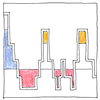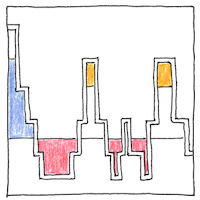Nathaniel Kleitman, Eugene Aserinsky, William C. Dement
behavioral science

|
Rapid-eye-movement sleep
Eugene Aserinsky was the first to record sleepers with an electroencephalogram machine and the first to notice readings on the recordings showing periods of rapid electrical activity. He and his advisor, Nathaniel Kleitman, with fellow student William Dement, were able to show that rapid eye movements were correlated with dreaming.
Stages of sleep
When you close your eyes, your brain changes from alpha to theta waves. Three or four times in the night you dream and rapidly move your eyes then at least briefly awaken. Nothing ever is done and finished. Your cares continue to accumulate. You work hard and persistently, you work until you sweat. In old movies, eyelids flutter as men are about to die.
REM, EEG, EOG, EMG, etc.
Electroencephalography measures brain waves (actually electric activity on the scalp). Electrooculography measures eye movements. Electromyography measures muscle movements. Alessandro Volta found nerves twitch with a tiny current. It’s not too much more to expect a measurable current when they twitch.
Ovaltine
The company that taught children that Ovaltine is an anagram for Vital One during the Captain Midnight series on television sponsored Doctor Kleitman’s research on sleep hoping that Ovaltine might help with insomnia.



A dog will chase a cat as it lies asleep on its rug. There are many types of sleep disorders, and dreaming is not one of them.
See also in The book of science:
Readings in wikipedia: